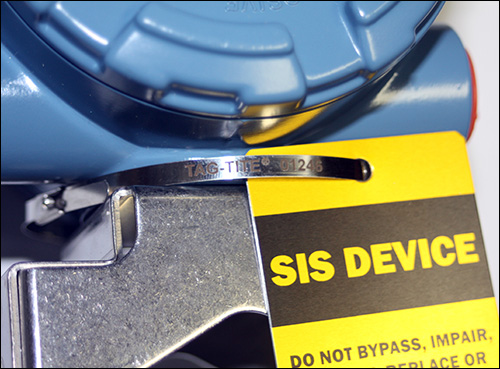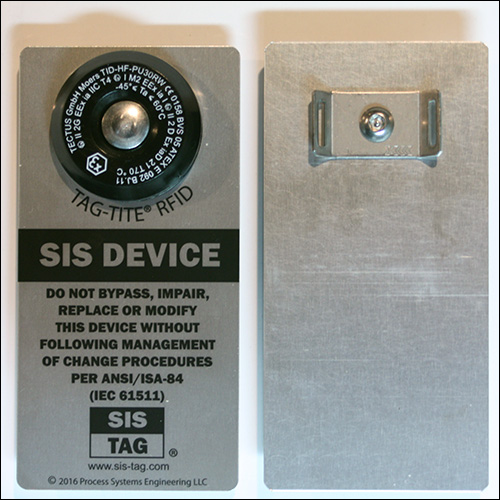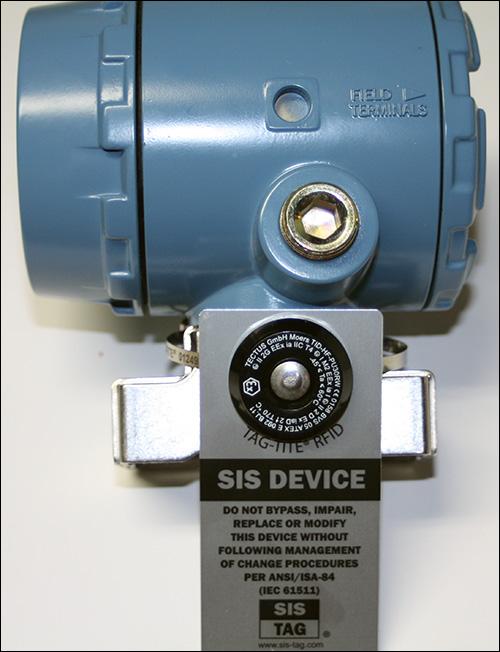Engineering company Process Systems Engineering (PSE) is marketing a Near Field Communication (NFC) RFID label it developed this year that will identify safety-instrumented system devices at industrial locations, as well as track each device’s maintenance and calibration history. The tags, in addition to the devices to which they are attached, are being installed under some of the most hazardous industrial conditions—at oil and gas companies, petrochemical refineries and chemical manufacturing sites. By using RFID labels, businesses can automate the collection of each safety device’s maintenance history, as well as ensure that all devices are being maintained, and that none end up missing.
PSE is a full-service engineering consulting firm that specializes in process control, industrial automation, process safety and safety instrumentation. Its customers are in the chemical, pharmaceutical, petrochemical, and oil and gas industries, according to Richard Pranke, PSE’s principal.
PSE’s customers tend to have hazardous materials on their premises that must be closely monitored as they are stored, to prevent any incidents such as leakage of a gas or liquid. Therefore, the companies use safety-instrumented system devices connected to tanks or vessels that might, for instance, track pressure and display an alert in the event that the device detects a problem. On a monthly, quarterly or annual basis, the companies send maintenance workers or inspectors around their facilities to ensure the devices are working properly, by performing procedures such as stroking (opening and closing) the valve.
Maintenance workers manually record what they do on paper, since hazardous environments prevent companies from allowing any laptop or other computer device into the area. In that way, employees cannot simply input data into a laptop or standard tablet.
For the past two years, PSE has been offering a bar-code label known as SIS-TAG, which is attached to safety devices via a tamper-evident, stainless steel fastener known as the TAG-TITE. “Our customers wanted the ability to track and maintain devices with the use of bar codes,” Pranke says, to make identifying each device easier. In 2015, the firm was selling the SIS-TAG label to a petrochemical company that has asked to remain unnamed, and that requested an RFID-enabled version.
In general, Pranke says, chemical, oil and gas, and other industrial companies have been moving toward using RFID to manage their processing equipment maintenance histories. The PSE petrochemical customer is one of those companies that has already been attaching RFID tags to some of its equipment, and has equipped its maintenance personnel with intrinsically safe RFID handheld readers to capture tag data and update each item’s history as they inspect or maintain it. Therefore, Pranke explains, the company approached PSE in 2015 seeking an RFID-enabled version of the SIS-TAG so that safety device testing could also be part of its RFID-enabled equipment-management system.
PSE teamed with Tectus, a German maker of industrial rugged RFID hardware, to create a stainless steel label with a built-in Tectus high-frequency (HF) 13.56 MHz RFID tag compliant with the ISO 15693 standard. The label measures 2 inches by 4 inches, and the RFID tag inside measures 1.3 inches in diameter and 0.25 inch thick. The tag is designed to operate under extreme conditions that include heat or cold (it accommodates a temperature range of -44 degrees to +60 degrees Celsius [-47.2 degrees to degrees +140 Fahrenheit]), as well as humidity, wind and other weather, salt spray, industrial solvents and chemicals. The labels can be affixed to equipment via the TAG-TITE. To remove a label or safety device, a user would need to cut through the TAG-TITE, which would leave visual evidence that the device had been taken or replaced.
The company using the SIS-TAGs with RFID began applying the tags to the equipment this year, and storing the unique ID number encoded on each label, along with the corresponding device’s ID and history, in the company’s own maintenance software. When a worker conducts maintenance or inspection processes on a piece of safety equipment, he or she first holds an off-the-shelf passive RFID reader, rated for hazardous locations, near the label to read the tag ID. The worker can then access data from the company’s maintenance software that indicates the item’s history and service. The data is also written directly to the tag, so if there is no wireless connection to the software, the employee can still access the necessary information, such as when the device was installed, what services have been provided and what the maintenance or calibration frequency for that item should be. The employee then provides the necessary services and inputs that data into the handheld, which forwards it to the software, along with the RFID tag ID, and writes the data to the tag.
For the petrochemical company, Pranke says, the system ensures that no safety device is ever missed or the wrong device serviced. It also reduces the amount of labor time that personnel would otherwise spend manually inputting data regarding what was being done. While bar coding provided a unique identifier, he adds, it did not enable data to be written to the label. On the other hand, he says, ultrahigh-frequency (UHF) RFID would not work for this purpose in the industrial environment, due to the long read range involved. Users must ensure that they are reading the correct tag, which requires a short read range. In some cases, Pranke points out, the numerous safety devices are installed within close proximity to each other.
By using the RFID-enabled labels, Pranke says, companies can not only identify what services have been provided to each safety device, but also view historical data indicating when that object was replaced. In that way, they can understand the life expectancy of every piece of equipment.
Since the labels were provided to the petrochemical company, a chemical manufacturer has also begun using the SIS-TAGs with RFID. According to Pranke, the company is now marketing the product beyond North America to Europe and the Middle East. “Our labels are fully customizable,” he says, including the label’s size and color and the information printed on the front.
PSE is also in the process of creating a mobile app that can be used with Android-based devices. With the app, users would be able to utilize a smartphone or tablet (provided that it was intrinsically safe for use in hazardous areas) to read each tag, update and view information, and write data directly to the tag. The app is expected to be made available in 2017.





